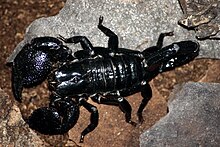Developmental selection is selection that occurs on developmental units in an organism, such as cell lineages, embryos, and gametes or gametophytes. Generally, developmental selection is differentiated from natural selection because the targets of selection are internal to an organism contain the developmental units, rather than selection due to external environmental factors that favor specific phenotypes. However, in animals, developmental selection against offspring can manifest in the external environment, in which parents might select against offspring with developmental instabilities, or when offspring with deleterious malformations may not survive.
Developmental selection in plants
Selective embryo abortion

A common form of developmental selection in plants is selective ovule abortion, where the maternal parent selects against unstable embryos. Abortion of low-viability offspring may be driven by either genetic factors or environmental stress. Developmental selection may also occur as the loss of embryos through expressed mutations in developing embryos that cause them to be unable to successfully survive, or from competition for maternal resources among the developing embryos.
Gametophytic selection
Developmental selection during the haploid life stage of plants may occur through gametophytic selection due to pollen competition and self-incompatibility. Gametophytic selection occurs when a large amount of pollen is deposited on the stigma, and may either occur by pollen competition or by the maternal plant inhibiting self-pollen or pollen from other species.
Cell lineage selection
Developmental selection can also occur as cell lineage selection due to differential growth rates among germ cell lineages in the apical meristem. In cell lineage selection, favorable mutations that arise in the meristem of plants are selected for and proliferate to become the dominant cells comprising the tip of the meristem, while deleterious mutations are selected against. This kind of selection can help to remove low-fitness meiotic and somatic mutations from populations of plants. This selection is analogous to somatic evolution in cancer.
Developmental selection in animals

Developmental selection can also occur in animals. Like with pollen competition, sperm is often produced in excess compared to the number of available eggs that can be fertilized. Thus, sperm competition displays developmental selection by selecting against gametes with morphologies that inhibit their success in fertilization. Poorly developed sperm can be also produced by environmental stressors that cause improper development in organisms.
Developmental selection may also occur in the living offspring of animals. This tends to occur as malformations in developing offspring that inhibit their survival. Malformed or otherwise abnormally developed offspring may be selected against by the parents. For example, in house mice, the newly born pups are eaten by the mother if they do not squeak or cry out when the mother eats the umbilical cord connecting to the pup.
References
- ^ Buchholz, John T. (1922). "Developmental Selection in Vascular Plants". Botanical Gazette. 73 (4): 249–286. doi:10.1086/332991. ISSN 0006-8071. JSTOR 2469844. S2CID 84562577.
- Díaz, Mario; Møller, Anders P.; Pulido, Fernando J. (2003-03-18). "Fruit abortion, developmental selection and developmental stability in Quercus ilex". Oecologia. 135 (3): 378–385. Bibcode:2003Oecol.135..378D. doi:10.1007/s00442-003-1202-y. ISSN 0029-8549. PMID 12721827. S2CID 19359207.
- Frank, Steven A. (January 1997). "Developmental selection and self-organization". Biosystems. 40 (3): 237–243. Bibcode:1997BiSys..40..237F. doi:10.1016/s0303-2647(96)01658-9. ISSN 0303-2647. PMID 9116186.
- ^ Møller, Anders Pape (1997-04-21). "Developmental Selection Against Developmentally Unstable Offspring and Sexual Selection". Journal of Theoretical Biology. 185 (4): 415–422. Bibcode:1997JThBi.185..415M. doi:10.1006/jtbi.1996.0332. ISSN 0022-5193.
- Langridge, J (1958). "A Hypothesis of Developmental Selection Exemplified by Lethal and Semi-Lethal Mutants of Arabidopsis". Australian Journal of Biological Sciences. 11 (1): 58. doi:10.1071/bi9580058. ISSN 0004-9417.
- Williams, J. H.; Friedman, W. E.; Arnold, M. L. (1999-08-03). "Developmental selection within the angiosperm style: Using gamete DNA to visualize interspecific pollen competition". Proceedings of the National Academy of Sciences. 96 (16): 9201–9206. Bibcode:1999PNAS...96.9201W. doi:10.1073/pnas.96.16.9201. ISSN 0027-8424. PMC 17757. PMID 10430920.
- Monro, Keyne; Poore, Alistair G. B. (February 2009). "The Potential for Evolutionary Responses to Cell-Lineage Selection on Growth Form and Its Plasticity in a Red Seaweed". The American Naturalist. 173 (2): 151–163. doi:10.1086/595758. ISSN 0003-0147. PMID 19115857. S2CID 11246616.
External links
- [REDACTED] Media related to Developmental selection at Wikimedia Commons